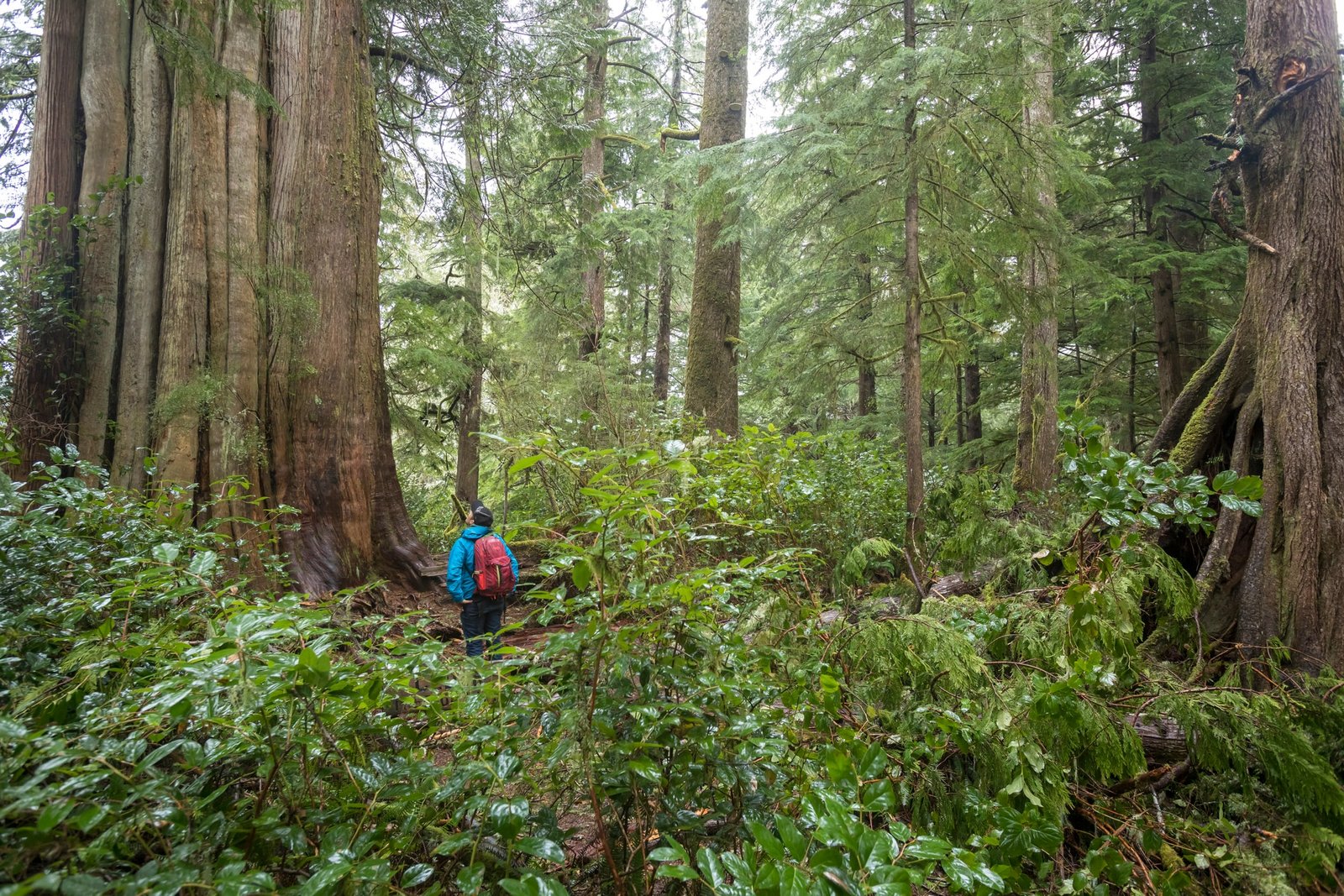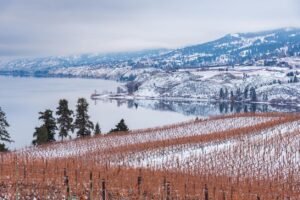Looking for an outdoor adventure near Tofino? Meares Island BC, located off the coast of Vancouver Island, offers ancient forests and stunning hiking trails. This guide covers the best trails, how to visit, and essential tips.
Introduction to Meares Island
Meares Island, located off the coast of Tofino, British Columbia, is a tranquil and awe-inspiring destination that offers a unique blend of natural beauty, cultural significance, and adventure. As part of the Pacific Rim National Park Reserve, Meares Island is a protected area that is home to ancient forests, towering trees, and a rich history. The island is situated on the traditional territory of the Tla-o-qui-aht First Nation, who have lived in harmony with the land for centuries. Visitors to Meares Island can explore the island’s stunning landscapes, learn about its cultural significance, and experience the warmth and hospitality of the local community.
Key Takeaways
-
Meares Island, a significant part of Pacific Rim National Park, features ancient red cedar trees and is rich in Indigenous heritage.
-
The Big Tree Trail is a must-visit 3.2-kilometer loop that showcases towering trees and requires good hiking boots due to muddy conditions.
-
Respecting the island’s cultural significance and adhering to safety tips, like sticking to marked paths, enhances the hiking experience.
Discovering Meares Island

Meares Island spans an impressive 84.8 square kilometers, characterized by rugged terrain, temperate rainforests, and sheltered tidal waters, located just 2 kilometers from Tofino, British Columbia. This beautiful island is a significant part of the Pacific Rim National Park, serving as a natural habitat within this protected area.
The island’s traditional name, Wanachus-Hilthuuis, originates from the Nuu-chah-nulth language, reflecting its deep Indigenous heritage. For centuries, Meares Island has been a vital resource for the Nuu-chah-nulth peoples, particularly the Tla-o-qui-aht and Ahousaht nations, known for its ancient western red cedar trees. These ancient trees are one of the island’s most captivating features, drawing visitors from around the world to marvel at their grandeur.
The Christie (Kakawis) Indian Residential School, which operated on Meares Island until 1983, had a significant impact on the local First Nations communities, highlighting the island’s historical significance within the broader narrative of environmental protests and the protection of indigenous sites.
Getting to Meares Island
Reaching Meares Island is an adventure in itself. The journey typically involves a short boat ride from Tofino, making the island feel like a secluded paradise. Water taxi services operate regularly between Tofino and Meares Island, providing a convenient and scenic option for travelers. Arranging transportation in advance is recommended, particularly during peak tourist seasons when demand is high.
Booking a water taxi ahead of time ensures availability, with return fares ranging from $25 for youth to $40 for adults. The boat ride to Meares Island takes about 10 to 20 minutes, giving you just enough time to soak in the stunning coastal views before you start your hike.
The Big Tree Trail Experience
The Big Tree Trail is one of Meares Island’s most iconic hikes, offering a 3.2-kilometer loop through an ancient old-growth forest. Located in the Tla-o-qui-aht First Nation’s Tribal Park, this trail is renowned for its towering trees, some of which are over 1,500 years old.
The experience of walking through this forest is like stepping back in time, surrounded by nature’s giants.
Starting at the Big Tree Trailhead
The Big Tree Trailhead, easily accessible via a short boat ride from Tofino, marks the start of your adventure. Disembarking, the grandeur of the towering trees immediately captures your attention, setting the tone for the hike ahead. The trailhead serves as the gateway to an enchanting experience, surrounded by the calming sounds of nature.
For those driving to the area, parking near the Big Tree Trailhead is convenient. The serene atmosphere at the start of your hike invites you to explore deeper into the forest, with each step bringing you closer to the heart of this ancient landscape.
Navigating the Boardwalk and Muddy Sections
The Big Tree Trail features a cedar-planked boardwalk that guides you through the dense rainforest. While the boardwalk provides a stable path, hikers should be cautious as it can be slippery, especially after rain. The first section of the trail is relatively straightforward, but as the boardwalk ends, the adventure truly begins on the big tree trail tour.
Many parts of the trail are muddy, requiring careful navigation. Be prepared to scramble over or under fallen trees and maneuver through deep mud, where slippery roots can pose additional challenges. Hiking boots are essential for tackling these challenging sections and ensuring a safe and enjoyable hike.
Reaching the Hanging Garden Tree
One of the highlights of the Big Tree Trail is the Hanging Garden Tree, a magnificent giant that stands as a testament to the ancient forest’s grandeur. This tree’s exceptional height and unique features make it a prime spot for photography, especially in the soft morning light.
Photographers and nature enthusiasts alike will find the Hanging Garden Tree to be a captivating subject. Its immense size and the surrounding lush landscape provide endless opportunities for stunning shots. Reaching this point on the trail provides a rewarding experience, evoking a sense of accomplishment and awe.
Exploring Other Trails on Meares Island
While the Big Tree Trail is a must-see, Meares Island offers other trails that are equally enchanting. The loop trail adds an extra 3 kilometers to your journey, leading through diverse forest paths and offering scenic beach views. This trail allows hikers to immerse themselves in the island’s old-growth forest and enjoy the tranquility of the natural surroundings.
Junctions along the full loop trail offer opportunities to explore different parts of the island. Keeping right at these junctions will guide you in a clockwise direction, making navigation straightforward. Local companies also offer guided tours, enhancing the experience with insights into the island’s history and ecology.
Respecting the Traditional Territory
Meares Island holds profound cultural and environmental significance for the Tla-o-qui-aht First Nation. In 1984, the Nuu-chah-nulth declared the island a Tribal Park to protect it from logging, emphasizing its cultural and ecological importance. This was Canada’s first Tribal Park, established by the Tla-o-qui-aht and Ahousaht First Nations, promoting the conservation of this precious land.
Respect the traditional territory by adhering to Leave No Trace principles and seeking permission before accessing Indian Reserves. The Tla-o-qui-aht Tribal Park Guardians oversee the conservation efforts, ensuring the land remains pristine for future generations.
Acknowledging and respecting these connections ensures a meaningful visit.
Wildlife and Natural Beauty
Meares Island is a haven for wildlife and natural beauty, making it a captivating destination for nature lovers. The island is home to diverse wildlife, including salmon runs and various plant species that sustain local ecosystems. Hikers may encounter a variety of birds and small mammals while exploring the lush landscapes.
The ancient forests of Meares Island host some of the largest redcedar trees globally, creating a visually stunning environment. Rich plant life and breathtaking scenery make every hike an adventure. The Hanging Garden Tree, in particular, highlights the ancient nature of the forest, offering a unique ecosystem that fascinates visitors.
Conservation Efforts
Meares Island is a protected area that is home to a diverse range of flora and fauna. The island’s old-growth forest is one of the most biodiverse ecosystems on the planet, with towering trees, ferns, and wildflowers. The island is also home to a range of wildlife, including black bears, wolves, and Roosevelt elk. To protect this unique ecosystem, the Tla-o-qui-aht First Nation and the Canadian government have established a range of conservation efforts. These efforts include the creation of the Wanachus-Hilthuuis (Meares Island) Tribal Park, which protects the island’s forests and wildlife. Visitors to Meares Island can learn about these conservation efforts and how they can help to protect this special place.
Preparing for Your Hike
Preparation is key to enjoying your hike on Meares Island. Given the often muddy and slippery conditions, wearing proper hiking boots is essential. Good footwear helps manage the challenging terrain and ensures a comfortable experience.
Dress in warm, lightweight layers and a waterproof jacket to protect against the island’s unpredictable weather. Quick-drying clothing is advisable, as materials like cotton and denim can retain moisture.
Bringing water, snacks, and a dry bag for personal items is also crucial for maintaining energy and keeping your belongings safe. A cell phone is handy for emergencies or communicating with your water taxi if delays occur.
Safety Tips
Prioritizing safety is essential when hiking on Meares Island. Stick to marked paths to protect the ecosystem and prevent getting lost. Avoid hiking in poor weather conditions due to the risks of falling trees and hazardous trail conditions.
Be cautious of slippery conditions on the boardwalk and muddy areas that can be challenging. The boardwalk can be uneven and rustic, requiring careful footing. Attention to safety ensures an enjoyable and secure hiking experience.
Summary
Meares Island offers an unparalleled hiking experience, combining natural beauty with cultural significance. From the iconic Big Tree Trail to the island’s diverse wildlife and ancient forests, every aspect of your visit will leave you in awe. Respecting the traditional territory and preparing adequately will ensure a memorable and respectful adventure. So pack your gear, book your water taxi, and get ready to explore the wonders of Meares Island.
Frequently Asked Questions
How do I get to Meares Island?
To get to Meares Island, just hop on a water taxi from Tofino; they run pretty frequently! It’s a quick and easy ride.
What is the best time to visit the Big Tree Trail?
The best time to visit the Big Tree Trail is during dry weather, so you can enjoy it without dealing with muddy conditions. That way, you’ll have a smoother and more enjoyable hike!
Are there guided tours available on Meares Island?
Absolutely, there are guided tours on Meares Island that dive into its rich history and unique ecology. You’re in for a treat with all the local knowledge they’ll share!
What should I bring for a hike on Meares Island?
Make sure to pack proper hiking boots, warm waterproof clothing, water, snacks, and a dry bag to keep your personal items safe. Trust me, you’ll want to be prepared for anything out there!
Is it necessary to book a water taxi in advance?
Yeah, it’s a good idea to book a water taxi in advance, especially during busy tourist seasons, to make sure you have a spot.






